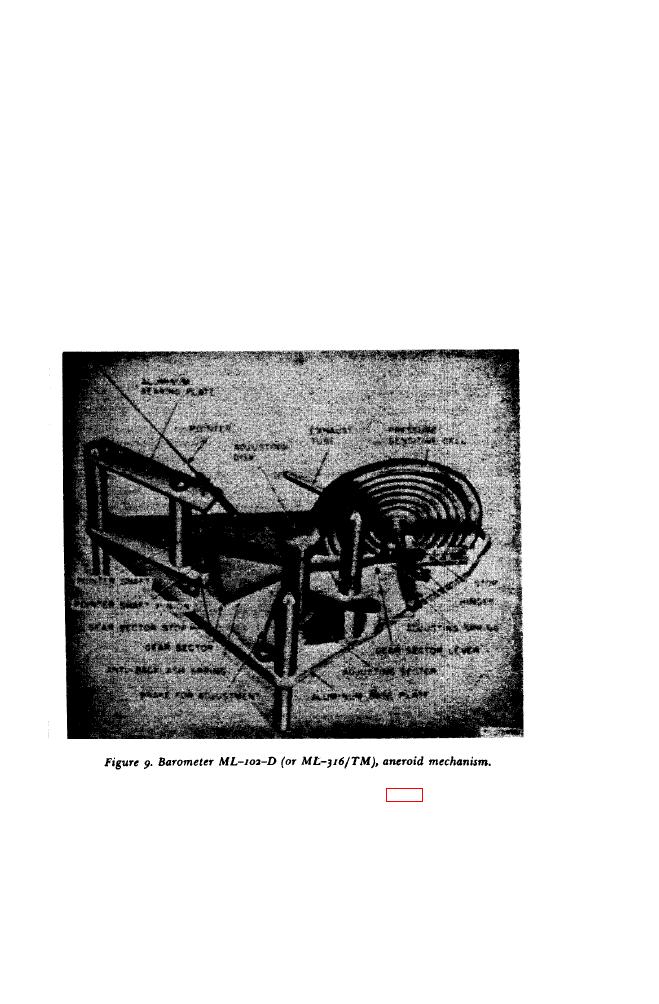
may be set to read current atmospheric pressure. The shaft of the worm
extends outside the barometer case and may be adjusted by means of
a screwdriver.
b. Magnification. (1) A movement of 0.0 09 inch (linear measure-
ment) of the aneroid cells causes the pointer to move over a pressure
interval of 1 inch. When it is remembered that an ordinary human
hair is 0.0 03 inch in thickness, the sensitivity of the instrument and
the extent of the magnification of the cell movement may be realized.
(2) In the first stage, the ratio of magnification is the radius of
the sector as compared with the distance from the end of the adjustable
lever to the bimetallic shaft.
(3) In the second stage, the ratio of magnification is the radius of
the sector as compared with the radius of the pinion gear.
(4) The third stage of magnification is the ratio of the radius of
the pointer from the pointer pivot shaft to the scale being used on the
dial to the radius of the pinion gear. Thus the outer scale, the inch
scale, givse slightly greater magnification than the inner millibar scales,
(1) The mechanism of Barometers ML- 1 0 2-D and ML-3 1 6/TM is
built upon a triangular-shaped aluminum base plate. The difference
in ran
of the two instruments is achieved by changing the spring
f the pressure sensitive cell. The aneroid element is a single
rate o
corrugated cell of beryllium copper about 2 inches in diameter and



 Previous Page
Previous Page
